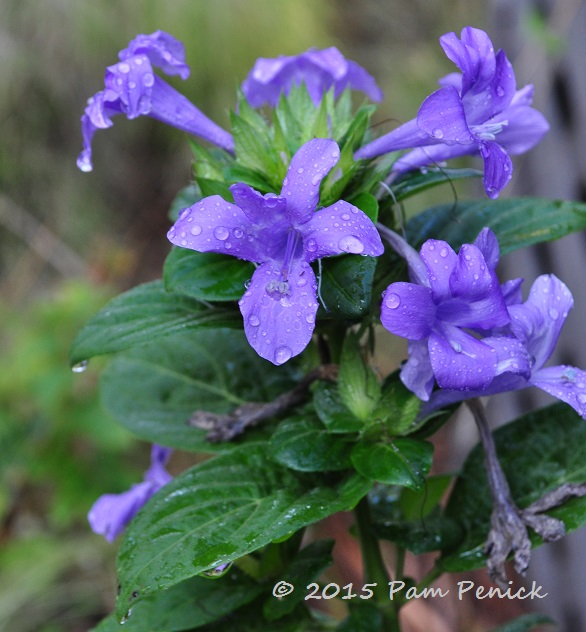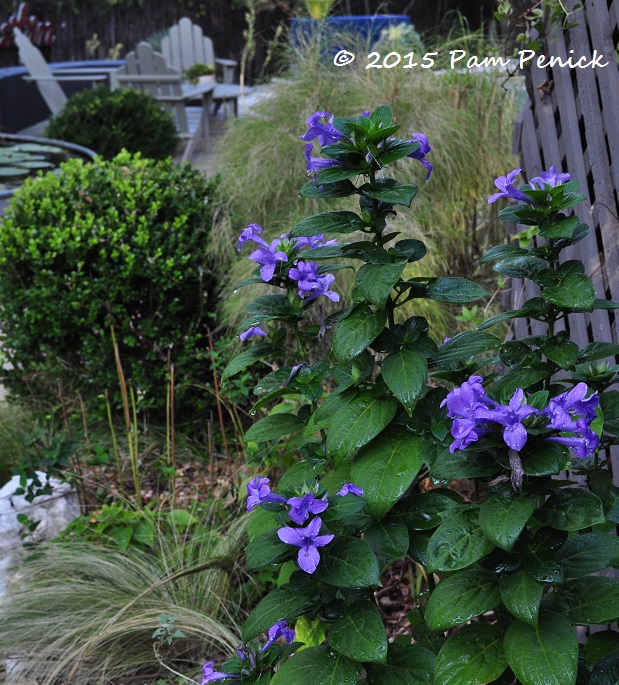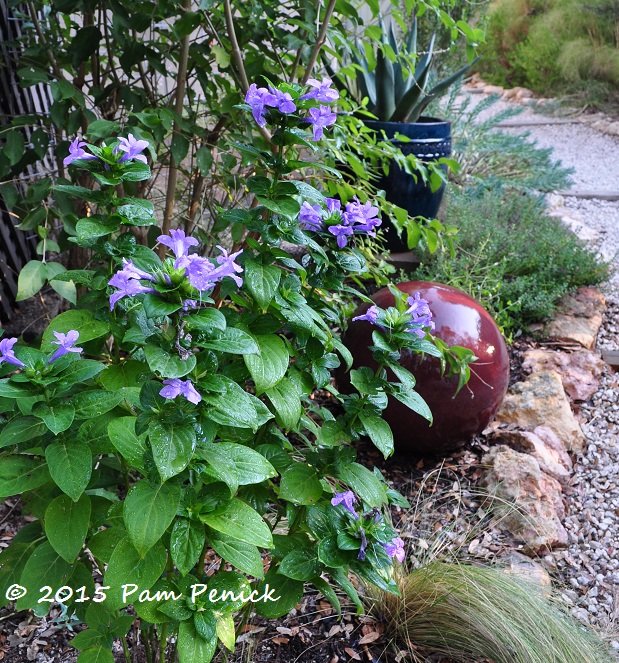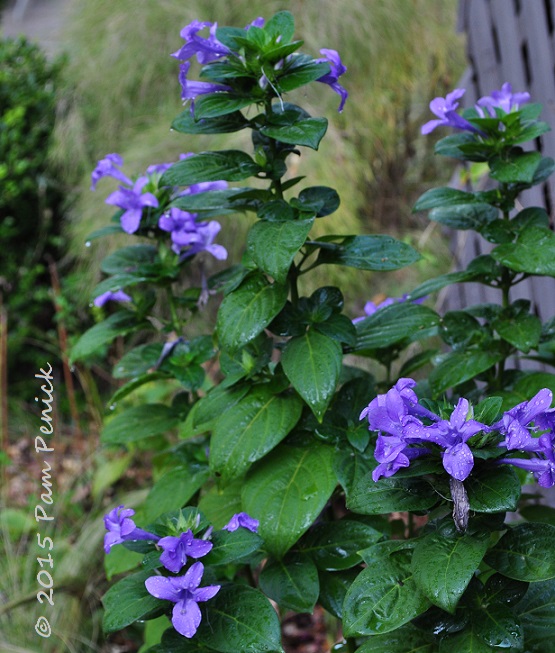Plant This: Flipping for Philippine violet
Autumn is a boom time for most Austin gardens, with a spring-like explosion of flowering perennials like salvia, lantana, mistflower, and native daisies. Add Philippine violet (Barleria cristata) to the mix, and enjoy weeks of tubular purple flowers clustered on upright stems of glossy, green leaves.
Native to southeast Asia — but neither a violet nor of Philippine origin, according to online sources — Philippine violet is root hardy here in Austin’s zone 8b, meaning it dies back to the ground in winter but comes back in spring. It’s one of those somewhat cold-tender plants that I’d wait to plant until late spring in order to give its roots a whole growing season to establish before winter. It appreciates morning sun or bright shade in my garden.
I’ve heard that deer find it tasty, so mine are planted in the fenced back garden. It grows 2 to 2-1/2 feet tall and about 1-1/2 feet wide, but I suspect it’d grow larger if given more water. Mine are watered once a week in summer.
I resisted trying Philippine violet for a long time, thinking it too tropical (i.e., thirsty) for my garden. But now I look forward to its fall show and am impressed by its toughness and long bloom period — typically, from mid-October through mid-November. And those glossy green leaves are handsome all spring and summer, even when it’s not in bloom.
So try Philippine violet, fellow mild-winter gardeners. I predict you’ll flip for it.
Note: My Plant This posts are written primarily for gardeners in central Texas. The plants I recommend are ones I’ve grown myself and have direct experience with. I wish I could provide more information about how these plants might perform in other parts of the country, but gardening knowledge is local. Consider checking your local online gardening forums to see if a particular plant might work in your region.
All material © 2006-2015 by Pam Penick for Digging. Unauthorized reproduction prohibited.






Goodness, that is gorgeous. Drool.
Maybe you’ll be adding it to your garden, Tina? I saw an online source listing it as a pollinator plant. —Pam
Love, love, love. It is one of my favorite plants for its reliability. I’m glad you decided to grow it because it seems to have no pests, its leaves staying glossy green all summer and then turning a bronze after frost. I have several seedlings from it.My advice is to cut it back if it doesn’t die to the ground in the winter. Otherwise it will be grow to more than 4′
Your beautiful P. violets helped sell me on this plant, Jenny. They are gorgeous in your garden. —Pam
The strangest thing. Thirty some years ago, I was given this plant, and it performed well the first couple of years. Ever since then it has been an invasive weed which doesn’t bloom more than one flower per stem but seeds out like crazy. In those thirty plus years I have been unable to get rid of it. Could I have some other species of Barleria besides Barleria crostata?
Hmm, how strange, Peter. I’ve never heard of this with Philippine violet. Do you think you may be confusing it with tall ruellia? The blooms are similar, but the ruellia is invasive like that. —Pam
I’ve loved this plant ever since I first saw it on the Texas blogs. I’ve yet to see it offered here; however, I may break down one day and mail-order one. I did find B. cristata’s smaller cousin, B. obtusa, though, which is currently flowering in my garden.
I could try to send you some seeds, Kris. Let me know. —Pam
I have the white version which helps to brighten up a shady area under the mesquite tree.
I’ve never seen the white one. It sounds perfect for brightening the shade. —Pam
We have South African barlerias.
Not yet got around to planting them here.
Common name April violets – which I like.
I like that name too, Diana. —Pam
So lovely. And since it is not a native it shouldn’t fall prey to nibbling by anything smaller than deer at least. That’s good news about it being a pollinator attractor AND that it isn’t too “thirsty” for a weekly watered spot. Hmmm……(hmmmmm……).
You’ll have to let me know about the deer and/or rabbit resistance, Deb. I think I’ve heard that deer will eat it, but I haven’t tested it. Mine is growing behind the back fence. —Pam
I’m a little late to the party here, but deer have definitely browsed mine in S. Austin. I only have them in the back, now. 🙂
Thanks so much for sharing that, Kate! —Pam
This plant is spectacular right now in central Florida too! It is easily missed most of the year, but when it is in flower it seems like everyone wants one. I’ve had good luck rooting from cuttings this time of year though so it is easily shared.
It’s a beauty in bloom. Thanks for the cutting tip, Keri. —Pam